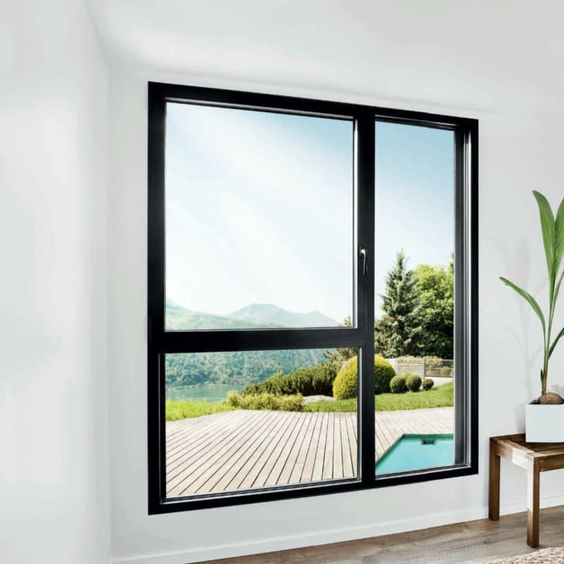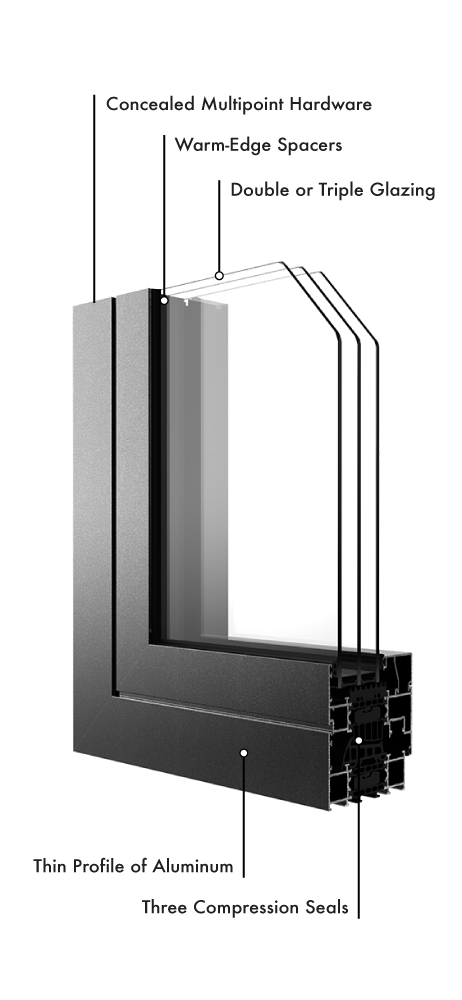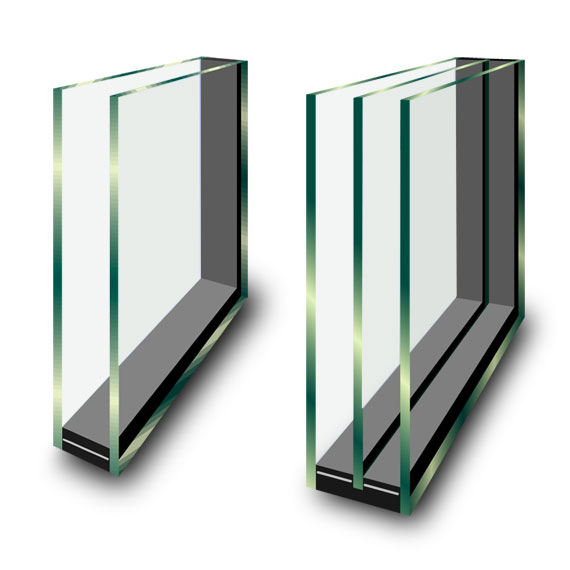5 Elements That Make Windows Energy Efficient

Every window in your home is an opportunity to bring in more light and ventilation. Windows are essentially barriers between the interior and exterior elements of your home (air, water, insects, etc.). They are also just one of many components that keep your home at a constant temperature every day.
Windows, doors, roofs and walls are all part of the building envelope. The building envelope is the shell of the house. The shell is responsible for repelling external elements and maintaining structural integrity as well as providing humidity and temperature control.Energy efficient windows are an important factor in ensuring a compact enclosure. The compact building envelope gives occupants greater control over indoor air quality, temperature, humidity levels and energy consumption. So what makes windows energy efficient?
5 elements to make windows energy efficient
The perfect recipe for energy efficient windows consists of 5 elements along with proper installation.Part of the energy saving window. Frame material: wood, fiberglass, vinyl. The frame material should be durable, low maintenance and have low heat transfer. Multiple panes: dual pane, triple pane. Multi-pane glazing units give you the opportunity to add windows in the form of insulation and gas filling. Single-pane windows are not constructed to maintain insulation like multi-pane units. Double-glazed windows have become standard, but you can also opt for triple-glazed windows (glass).

Low-E Glass: Infrared, Ultraviolet. Low-e glass reduces the amount of infrared and ultraviolet rays entering your home through the glass. There are different types of low-e glass, but generally low-e is a coating that reflects the radiation that hits the glass. Glass fillers: Argon, Krypton. Insulated glass units (IGUs) are filled with an inert gas such as argon or krypton to reduce conduction and overall heat transfer. Inert gases such as argon and krypton are odorless, colorless and non-toxic. Warm Edge Gasket: Gasket, Warm Edge Gasket. Glass units with multiple panes use spacers to maintain the correct distance between glass panes. Warm edge gaskets made from non-metallic and metal/non-metal hybrid materials help reduce heat transfer.
frame material
Interior view of the window. Each frame is made from a different material, including wood, vinyl, aluminum, and fiberglass.
A quality frame material should be durable, low maintenance and have low heat transfer. The most energy-efficient window frames are non-metal frames such as wood, fiberglass, or vinyl. While wood has the lowest heat transfer value, it requires a lot of maintenance, even those with cladding. The most energy efficient and easiest to care for windows will use fiberglass or vinyl frames and sashes.
multiple panes
Examples of single-pane, double-pane, and triple-pane cells.

Multi-pane windows are more energy efficient than single-pane windows. Multiple pieces of glass are used in an insulating glass unit (IGU). Unlike single-pane windows, multi-pane units have spaces between glass panels that can be filled with an inert gas to provide a barrier to heat flow.
Double-glazed windows have become standard in window units, but you can also opt for windows with triple-glazed packages.
Low-E glass
Low-E stands for low emissivity. When heat or light hits the glass on a window, two things happen. The first is that heat or light energy can be carried away by moving air convection. The second is that heat or energy can be re-radiated by the glass surface, which means that the energy is further absorbed by the glass.
According to the data, 84% of the long-wave radiation hitting the transparent glass surface is absorbed by the glass and only 16% is reflected. Compared to glass with a low emissivity coating, only 4% is absorbed and 96% is reflected.Low-e coatings reduce the amount of infrared and ultraviolet rays entering your home through glass without minimizing the amount of light entering your home.
gas filling
Gas fillers improve the thermal performance of windows by reducing the conductivity of the air space between multiple layers of glazing. Without a gas filling, the airflow between the glass would carry heat to the top of the sealed glass unit, while cooler air would settle at the bottom.An inert gas such as argon or krypton fills the space and minimizes convection, thereby reducing conduction through the gas and overall heat transfer between inside and outside temperatures.The EWC states that the optimal spacing between panes filled with argon is about ½”, while the optimal spacing between panes filled with krypton is about 1/4”.
Warm edge gasket
Spacers are used to separate multiple panes of glass in a window unit. Gaskets can also accommodate thermal expansion and contraction stresses and provide a moisture barrier to prevent water passage or fogging in the glass unit. Additionally, the gasket provides a hermetic seal to prevent loss of gas fill. Warm edge gaskets are specifically designed to improve thermal performance.
On their own, each of these elements doesn't make much sense, but together they make a high-performance unit. With custom windows, you can choose to build windows that meet or exceed local energy codes.